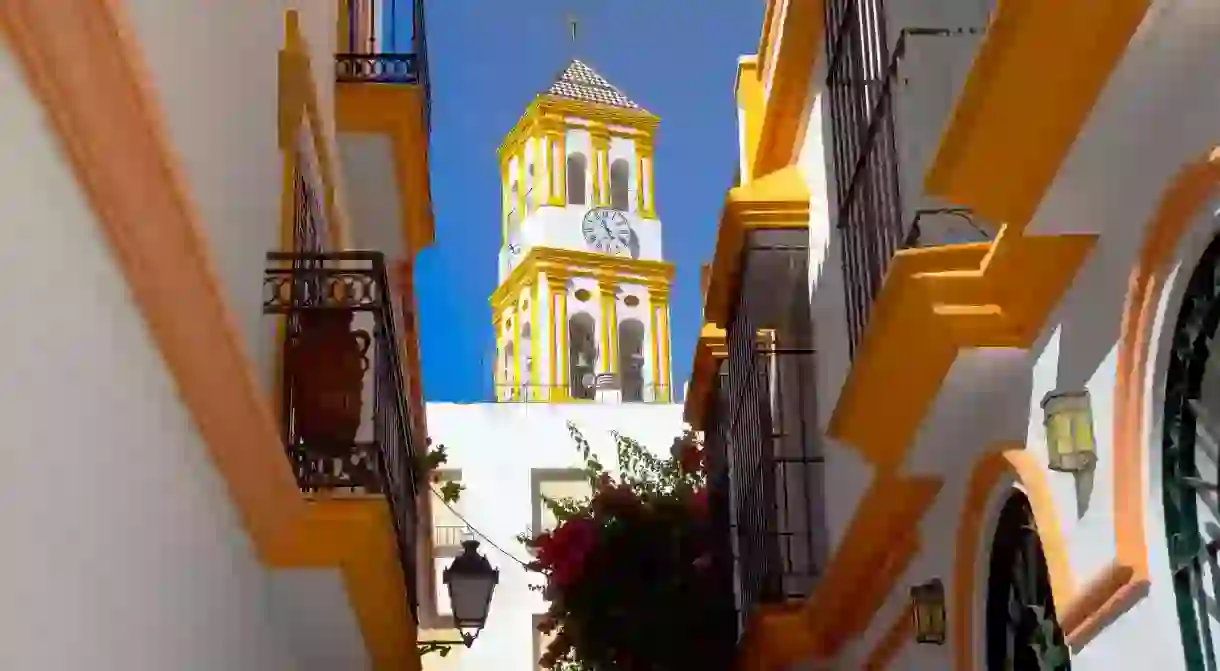The Most Beautiful Buildings in Marbella

The Mediterranean city of Marbella is home to some strikingly attractive buildings, from a colourful flamenco bar to an elegant former hospital. Read on for our pick of the most beautiful buildings in Marbella.
La Cuisine Restaurant
The food and service at La Cuisine Restaurant on the edge of Marbella’s old town receive rather mixed reviews, but one thing is indisputable: it is housed in one of the most beautiful buildings in the city. Six elegant French windows look out onto the plaza from its gracefully faded pink and green facade, on one side of which flowers hang from an old street lantern.
Encarnación Church
Church

The Iglesia de Nuestra Señora de la Encarnación is old Marbella’s main church. Constructed in the 16th and 17th centuries, it is notable for its ornate and perfectly preserved entrance and its pretty bell tower. The latter is particularly attractive on sunny days, when its bold whites and yellows contrast stunningly with the spotless blue of Andalusian skies.
Ana Maria Flamenco Club
Building, Theater

Hotly debated is the issue of whether the Ana Maria flamenco bar shows the real thing or a watered-down, rip-off version for tourists (entry is €25). Never mind that, though, because it’s lovely just to look at. Simply and happily painted in the blues and yellows you see so much of in Andalusia, it looks like something straight out of a kid’s colouring book. The building next door isn’t bad, either.
Santo Cristo Hermitage
If you’re standing facing the Ana Maria flamenco bar, turn 90° to your left and you’ll be looking at one of the oldest buildings in Marbella. The Ermita Santo Cristo de la Vera Cruz was built in the late 16th century, originally as part of a Franciscan convent. Its understated facade provides a pleasing contrast with the plaza’s more flamboyant buildings.
Castle walls and watchtowers
The 10th- and 11th-century walls of what was once Marbella’s Moorish fort can be found on the eastern side of the old town. Along with 10 defensive watchtowers, they are all that’s left of the original structure, which was constructed in the 9th century. At that time – owing to its position on the coast, at the foot of the Sierra Blanca mountains – Marbella was one of Moorish Spain’s key cities.
Sandcastles
Although not full-scale buildings, the sand sculptures on the Fontanilla beach deserve to be featured here. Given the detail and intricacy of their design, it’s hard to believe they have been created with nothing more than sand and sea water – up to three tons of it, in fact. Standing about a metre (three feet) in height, these amazing miniature castles need to be sprayed with water every couple of hours to be kept from collapsing.
Bazán Hospital
Museum
Wander up Calle Hospital Bazán in Marbella’s old town and you’ll soon encounter the Moorish arches of the former Bazán hospital. It was built in the early 16th century and originally also contained a chapel in which members of the local Bazán family were buried (Don Alfonso Bazán left money in his will for the hospital’s construction). Nowadays, it houses the city’s Contemporary Engravings Museum.













